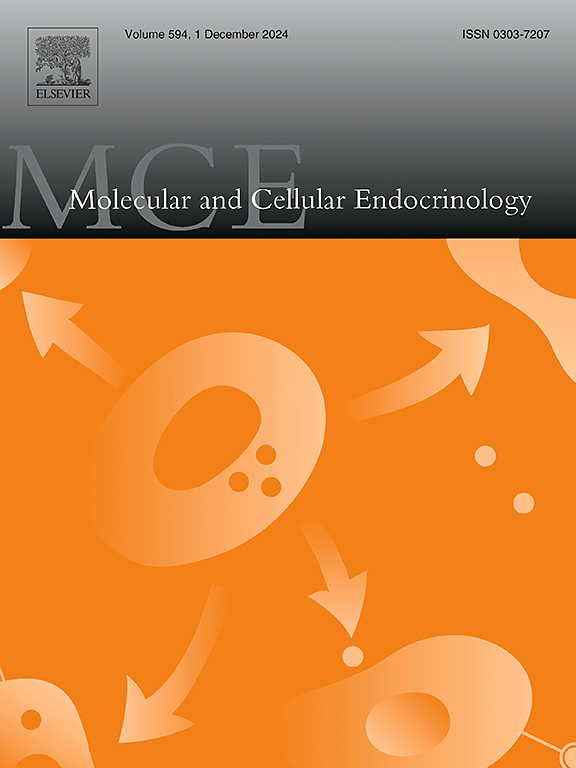RUNX3 drives HTR-8/SVneo cell ferroptosis and spontaneous abortion: involvement of the suppression of GDF15 transcriptional activity
IF 3.6
3区 医学
Q2 CELL BIOLOGY
引用次数: 0
Abstract
Spontaneous abortion (SA) refers to the loss of a pregnancy without external intervention. The runt-related transcription factor 3 (RUNX3) is associated with gestational disorders in view of previous studies. However, RUNX3 has not been reported in SA. RUNX3 is significantly upregulated in the placental villi of abortion patients based on the GSE123719 microarray data. Herein, we further validated and found that the expression of RUNX3 in placental villi of SA women was higher than those of induced abortion (IA) women. In vitro, we constructed human RUNX3 overexpression or interference adenovirus vectors to modulate RUNX3 expression in trophoblast cells. Our findings revealed that RUNX3 overexpression accelerated trophoblast cell ferroptosis, while RUNX3 knockdown alleviated erastin-induced ferroptosis. Subsequently, the dual luciferase reporter assay was performed to confirm that RUNX3 bound to the GDF15 promoter to transcriptionally repress GDF15 transcriptional activity. Importantly, GDF15 attenuated the pro-ferroptosis effects of RUNX3 on HTR-8/SVneo cells. In vivo, mouse RUNX3 interference adenovirus vectors were used to silence RUNX3 in mice. The results presented that the reduction of RUNX3 inhibited embryo adsorption rate in SA mice, involving ferroptosis and the interaction between RUNX3 and GDF15. Taken together, this study established that RUNX3 advanced SA progression by enhancing trophoblast ferroptosis via transcriptionally repressing GDF15. These findings may provide novel therapeutic strategies for SA management.
RUNX3驱动HTR-8/SVneo细胞铁下垂和自然流产:参与抑制GDF15转录活性。
自然流产(SA)是指在没有外界干预的情况下流产。根据以往的研究,矮小相关转录因子3 (RUNX3)与妊娠疾病有关。然而,RUNX3在SA中尚未报道。基于GSE123719芯片数据,RUNX3在流产患者胎盘绒毛中显著上调。我们进一步验证并发现RUNX3在SA女性胎盘绒毛中的表达高于人工流产(IA)女性。体外构建人RUNX3过表达或干扰腺病毒载体,调控RUNX3在滋养细胞中的表达。我们的研究结果显示,RUNX3过表达加速了滋养细胞铁下垂,而RUNX3敲低则减轻了erastin诱导的铁下垂。随后,进行双荧光素酶报告基因测定,证实RUNX3与GDF15启动子结合,转录抑制GDF15的转录活性。重要的是,GDF15减弱了RUNX3对HTR-8/SVneo细胞的促铁下垂作用。在体内,利用小鼠RUNX3干扰腺病毒载体沉默小鼠RUNX3。结果表明,RUNX3的降低抑制了SA小鼠胚胎吸附率,涉及铁下垂和RUNX3与GDF15的相互作用。综上所述,本研究证实RUNX3通过转录抑制GDF15促进滋养细胞铁下垂,从而促进SA进展。这些发现可能为SA的治疗提供新的治疗策略。
本文章由计算机程序翻译,如有差异,请以英文原文为准。
求助全文
约1分钟内获得全文
求助全文
来源期刊

Molecular and Cellular Endocrinology
医学-内分泌学与代谢
CiteScore
9.00
自引率
2.40%
发文量
174
审稿时长
42 days
期刊介绍:
Molecular and Cellular Endocrinology was established in 1974 to meet the demand for integrated publication on all aspects related to the genetic and biochemical effects, synthesis and secretions of extracellular signals (hormones, neurotransmitters, etc.) and to the understanding of cellular regulatory mechanisms involved in hormonal control.
 求助内容:
求助内容: 应助结果提醒方式:
应助结果提醒方式:


